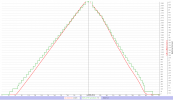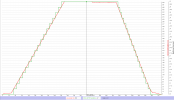I figured there would be nitpicking, and technical flexing. It means nothing to me.
I'm a retired EE. I've spent so much time reading specs for various batteries I'm virtually cross-eyed. Designing BMS circuits and selecting LiIon formulations and functional characteristics is something I'm very familiar with.
Throw all the jargon at me you wish. It doesn't impress.
Nitpicking over auto-discharge percentage is a good example. I don't know the exact percentage, and no one else here does either. it's not the point. This is a casual conversation among laypeople... 50% is a "rule of thumb" used almost universally as proper lipo storage level. You can't discuss lipos anywhere on the internet without running into the 50% storage rule of thumb almost immediately.
Others reading will make up their own minds, which is the point.
You are wasting your time and effort trying to eek a few more cycles out of your battery modules. You simply do not have sufficient direct control over the battery cells to meaningfully affect these issues – save making sure you charge them.
Finally,
@slup please do not put words in my mouth. I can speak for myself. I meant what I said as it was written. You don't agree. That's fine with me. Insulting me by stating that I don't care is what pissing matches are made of.
For example, you keep making statements that scream ignorance on the subject. "DJI's lithium pouches inside the hard shell enclosure aren't of any special magic mixture ... they are identical to all other LiPo batteries".
Impossible, as all other lipos are not identical to each other, nor are their chemistries, nor their charge/discharge characteristics. In fact, these attributes vary widely, such that there are lipos that tolerate full charge without significant degradation for a year or more, others that operate at a higher charge voltage, and on and on.
You seem to know a lot about Li-Ion batteries that's wrong. Not opinion, but factually. like the idea that all lipos are the same.












